How to Find Reserved Storage Size in Windows 10
If you have enabled the Reserved Storage feature in Windows 10, here's how to find the reserved storage size used for Windows Update, system cache, and temporary files.
Advertisеment
Starting with the next major update, which is Windows 10 19H1, Microsoft is making a few changes to how Windows 10 manages disk space. Some disk space - reserved storage - will be set aside to be used by updates, apps, temporary files, and system caches. Here's how to enable or disable this feature.
Windows 10 will reserve some disk space to ensure that critical OS functions always have access to disk space. If a user almost fills up her or his storage, several Windows and application scenarios become unreliable. For example, Windows Update may fail to download new update packages. Reserved storage solves this issue. It will be introduced automatically on devices that come with version 1903 pre-installed or those where 1903 was clean installed.
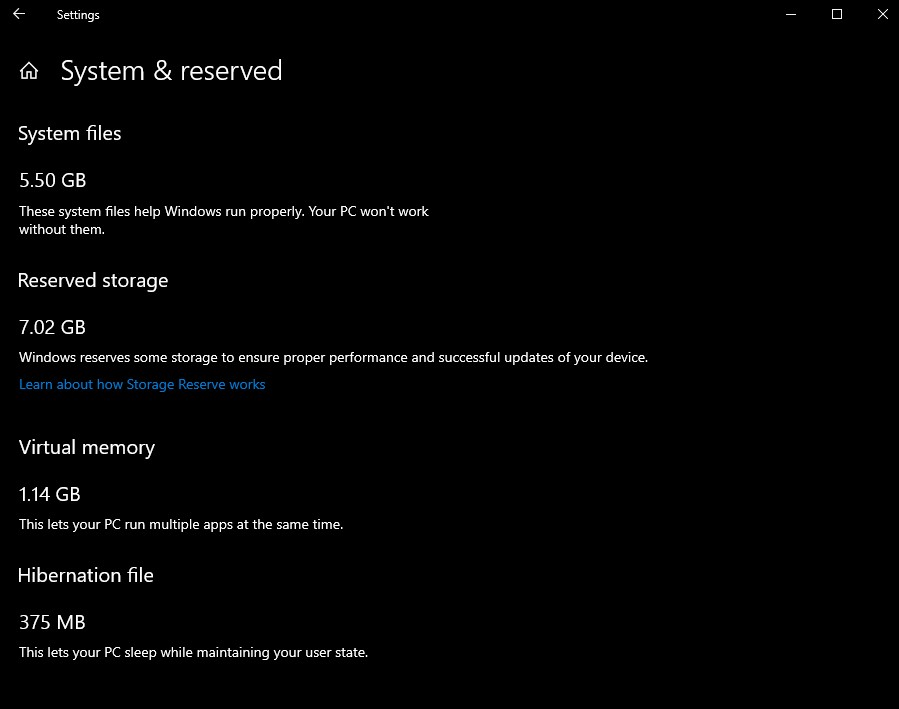
With reserved storage, updates, apps, temporary files, and caches are less likely to take away from valuable free space and should continue to operate as expected.
How much of storage is reserved
In the next major release of Windows (19H1), Microsoft anticipates that reserved storage will start at about 7GB, however the amount of reserved space will vary over time based on how you use your device. For example, temporary files that consume general free space today on your device may consume space from reserved storage in the future. Additionally, over the last several releases Microsoft reduced the size of Windows for most customers
When enabled, reserved storage will instantly reserve its full allotment of disk space. However, on disk-space-constrained devices, enabling reserved storage will leave the user space and will only take the minimum—which is 2% of system volume capacity or 3GB of disk space, whichever is lower—to ensure that the device is functional and accessible to the user for further operations. Reserved storage will grow back to its original allocated size as space becomes available, such as when old Windows installations are removed or then Storage Sense cleanup tasks are conducted.
The reserved storage cannot be removed from the OS, but you can reduce the amount of space reserved.
The following two factors influence how reserved storage changes size on your device:
- Optional features. Many optional features are available for Windows. These may be pre-installed, acquired on demand by the system, or installed manually by you. When an optional feature is installed, Windows will increase the amount of reserved storage to ensure there is space to maintain this feature on your device when updates are installed. You can see which features are installed on your device by going to Settings > Apps > Apps & features > Manage optional features. You can reduce the amount of space required for reserved storage on your device by uninstalling optional features you are not using.
- Installed Languages. Windows is localized into many languages. Although most of our customers only use one language at a time, some customers switch between two or more languages. When additional languages are installed, Windows will increase the amount of reserved storage to ensure there is space to maintain these languages when updates are installed. You can see which languages are installed on your device by going to Settings > Time & Language > Language. You can reduce the amount of space required for reserved storage on your device by uninstalling languages you aren’t using.
As of this writing, Windows 10 "19H1", version 1903 comes with the Reserved Storage feature disabled by default. You need to enable it manually. See
Enable or Disable Reserved Storage in Windows 10
After you upgrade your device to the next available build with the Reserved Storage enabled, you will be able to find the reserved storage size.
To Find Reserved Storage Size in Windows 10,
- Open the Settings app.
- Go to System - Storage.
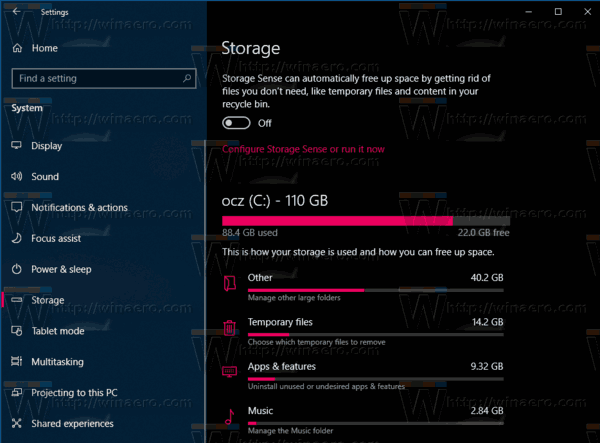
- On the right, click on the Show more categories link.
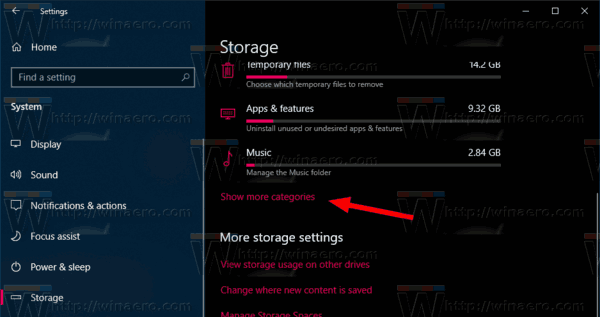
- Now, click on the System & reserved item.
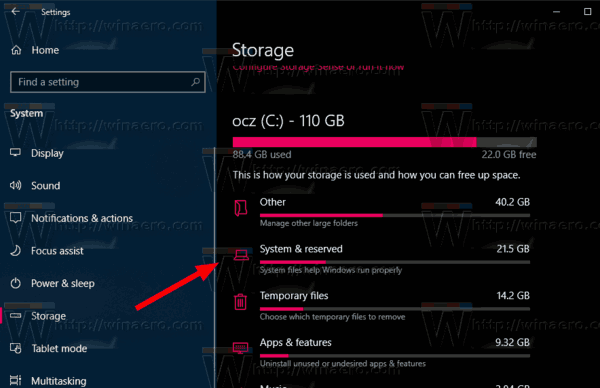
- On the next page, see the Reserved storage size value.

You are done.
Update: Starting in Windows 10 version 2004, also known as '20H1', you can use DISM or PowerShell to manage the Reserved Storage feature.
To Find Reserved Storage Size with DISM,
- Open a new elevated command prompt.
- Type
DISM.exe /Online /Get-ReservedStorageStateto see if the Reserved Space feature is enabled or disabled.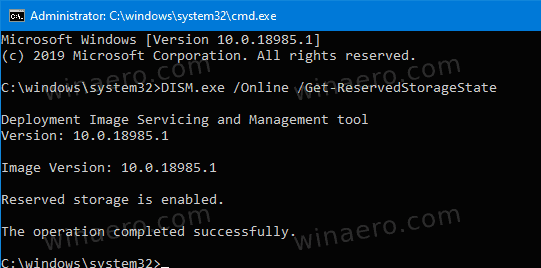
- You are done.
To Find Reserved Storage Size with PowerShell,
- Open PowerShell as Administrator.
- Type
Get-WindowsReservedStorageStateto see if the Reserved Space feature is enabled or disabled.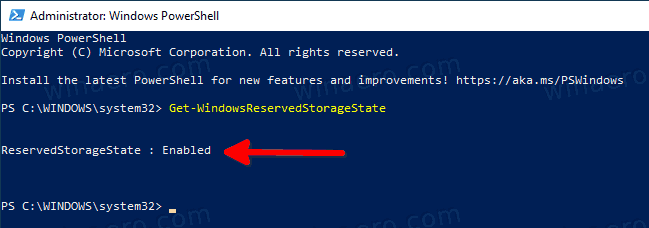
- You are done.
That's it.
Support us
Winaero greatly relies on your support. You can help the site keep bringing you interesting and useful content and software by using these options:
